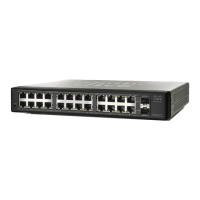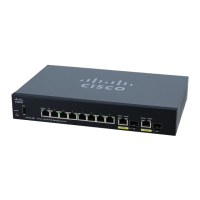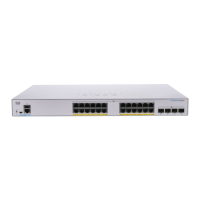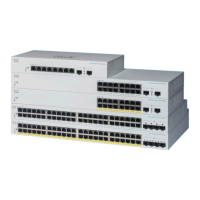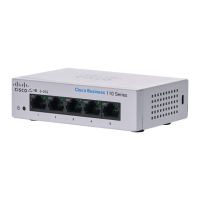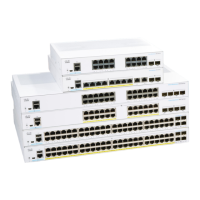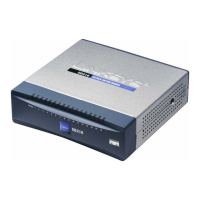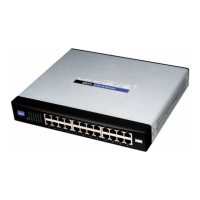Port Management
Link Aggregation
Cisco Small Business 200E Series Advanced Smart Switch Command Reference 199
3
e3 Enable 5% Disable 5% Disable 5%
e4 Disable 5% Disable 5% Disable 5%
e5 Disable 5% Disable 5% Disable 5%
e6 Disable 5% Disable 5% Disable 5%
e7 Disable 5% Disable 5% Disable 5%
e8 Disable 5% Disable 5% Disable 5%
.
.
.
e24 Disable 5% Disable 5% Disable 5%
Related Commands
Link Aggregation
Link Aggregation allows one or more full-duplex Ethernet links to be aggregated
together to form a Link Aggregation Group (LAG). This allows the switch to treat
the LAG as if it is a single physical port, with improved fault tolerance and load-
sharing capability.
A LAG interface can be either static or dynamic.
• Static LAG—Ports are assigned to a LAG by the administrator. The ports
remain dedicated LAG members until configured otherwise.
• Dynamic LAG—Ports are designated as candidates for joining a LAG, and
form it automatically by exchanging special frames called Link Aggregation
Protocol Data Units (LACPDUs). When formed, the LAG might include only a
subset of the eligible ports, depending on the port number limitations for
LAGs and other factors. When not included as a member of a LAG, a port
functions as standalone port.
All members of a LAG must be of the same type (static or dynamic).
Command Description
storm-control
unicast
Enables unicast storm recovery mode for an interface or
all interfaces.
storm-control
multicast
Enables multicast storm recovery mode for an interface or
all interfaces.
storm-control
broadcast
This command enables broadcast storm recovery mode
for an interface or all interfaces.
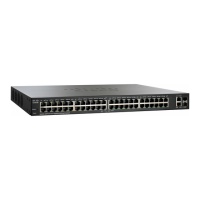
